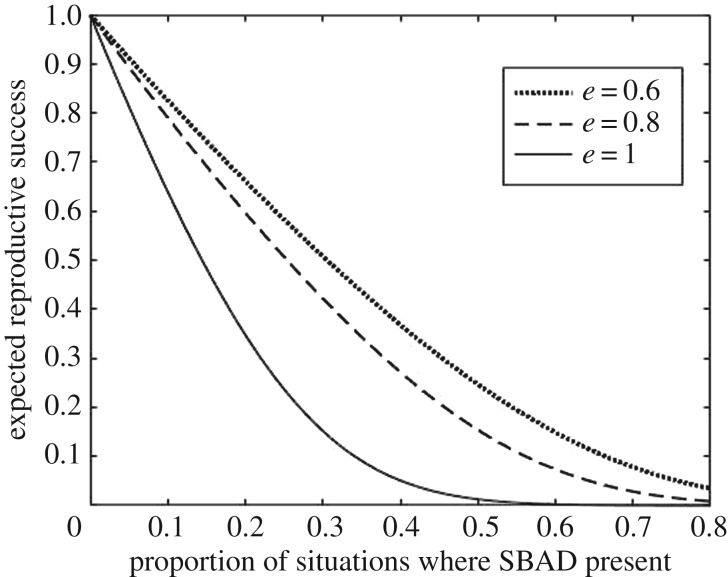Figure 3.
As the probability of escaping a predator when responding, e, increases, the effect of SBAD also increases. This is because there is ever-more reason to run from predator-like signals when e is large, so under such circumstances, SBADs have a more significant effect on behaviour. Note that each line has been ‘normalized’ such that without SBAD, the expected reproductive success is 1, so the population size is, on average, unchanging prior to SBAD being introduced. (Parameters: pD = 0.1, μS = 0, μD = 2, μN = 2, σ = 1, e = 1, m = 0, c = 6.)

